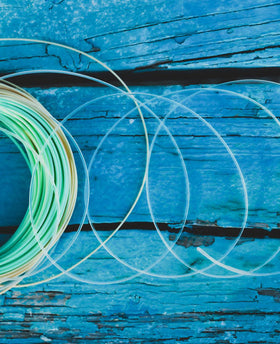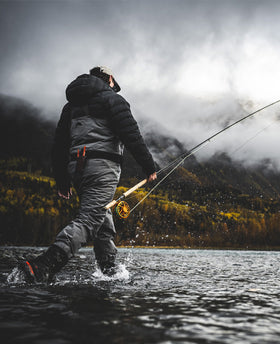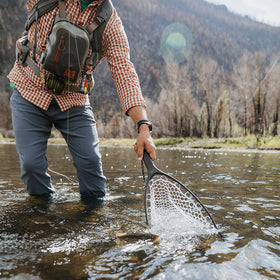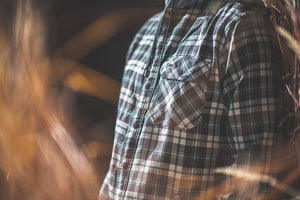
Making Saltwater Fishing More Accessible
These days, if you follow mainstream fly fishing on social media, you’ve probably noticed an abundance of content about saltwater fly fishing, particularly in tropical, exotic locations where anglers target species you didn’t even know existed. Like many others, I’ve been intrigued by this. However, after looking into the lodges commonly promoted, I realized that such trips are not the most realistic spring break idea for a college kid like me. While lodges are undoubtedly the most hands-free and reliable way to have a productive and educational saltwater trip, I discovered through research that there are other ways to step into the world of saltwater fly fishing.

In 2023, I visited one of the lesser-known fly fishing destinations, Puerto Rico. It offers a variety of fishing opportunities, including limited but high-quality fishing for the super slam species(bonefish, permit, tarpon, and snook). During my trip, I encountered all of these species in one way or another. I’d like to share some details about this experience, which may provide new insights and ideas for anyone looking to explore saltwater fly fishing.

Research
During my initial research, I was directed to well-known saltwater fishing destinations like the Florida Keys, Belize, and the Yucatán Peninsula. While these locations are established and enticing, they often come with a high price tag. Additionally, many of the lodges are remote, making it difficult to bring along someone who isn’t as interested in fishing—like my dad in this case.
Eventually, I stumbled upon an article about Chris Goldmark, who ran a guide service on the Puerto Rican island of Culebra since 1991. Although Chris had retired and passed the business to Antonio Flecha, I found Antonio’s website, made a quick phone call, and soon, I was Puerto Rico-bound.
The Trip
Since Puerto Rico is a U.S. territory, we didn’t need passports. We flew from Denver to Atlanta and then to San Juan, Puerto Rico’s capital. After landing and picking up our luggage, we took a taxi to a smaller airport and caught a flight 60 miles east to Culebra.
We planned to spend five days in Culebra and one full day in San Juan at the end of the trip. I booked two half-day guided trips with Antonio in Culebra, as well as a half-day tarpon/snook trip in San Juan. The guided trips were scheduled toward the end of our stay, so I had the first three days to explore and fish on my own.
On the first morning, I got up early, rented a golf cart, and headed to a turtle grass flat I’d scoped out on Google Maps. Although I was skeptical—given its proximity to town—I decided to give it a try. After ten minutes of no action, I walked along the beach and spooked a school of fish. They regrouped about 60 feet away, so I made a cast and slowly stripped the fly. One fish aggressively ate, and before I knew it, I was in my backing—a rarity in my years of fishing. To my surprise, it was a 16-inch bonefish. Catching such a prized saltwater species within 20 minutes of fishing left me stunned. I took some photos, released the fish, and shortly afterward, caught an even bigger one from the same school. That morning, I began to understand the obsession with these fish.

Throughout my time in Culebra, I returned to this flat and caught more bonefish, along with snapper and even a barracuda. I also met Chris Goldmark, who graciously gave me some of his hand-tied flies and seemed thrilled to see another fly fisherman on the island.

After three days, I met up with Antonio, and we headed to some more extensive coral flats. Antonio, deeply knowledgeable about the area, balances finding fish with preserving the fishery. While he knows reliable spots for bonefish and tarpon, his passion for chasing permit was evident. On our first day, we passed a school of 70 bonefish to target permit. Culebra’s permit are challenging to catch due to coral flats and their larger size compared to those in more popular fisheries. We quickly found two fish in the 20–25 lb range, but after a perfect cast, the fish inspected the fly and didn’t eat. Despite the challenges, the next two days yielded numerous grand slam species and a standout 4–5 lb bonefish.
Back in San Juan, I joined Captain Clery of Backwater Tarpon Fishing Charters. Fishing in the lagoons was incredibly productive. At one point, I watched hundreds of tarpon attacking bait in a chain reaction. By the end of the morning, I had caught three tarpon and missed a large snook. I left the trip with a shot at trophy-sized fish for every super slam species—exceeding my expectations.

Setting Realistic Expectations
When planning a DIY saltwater fly fishing trip, it’s crucial to manage your expectations. A DIY trip is not the same as spending a week at a lodge. For perspective, if someone visited Colorado for a few days, they wouldn’t expect to catch a 27-inch brown trout. The same logic applies to the salt. Setting realistic goals will significantly improve your experience.
For my first trip, my goal was simple: catch one of the three grand slam species. Achieving this on my first morning allowed me to set new goals, but even if I had returned home then, I would have been satisfied. I also enjoyed targeting less sought-after species like snapper and jacks. While they might not look as impressive on social media, they’re often easier to find and can still rip some drag.

Affordable Gear
One common barrier to saltwater fly fishing is the cost of gear. Your standard 5wt trout setup isn’t suitable for saltwater, meaning most first-timers will need to purchase a new setup. For this trip, I used a 10wt Redington Predator rod, paired with a Redington 9/10/11 reel and Scientific Anglers Textured Grand Slam line. A 9wt setup would also suffice, but I opted for a 10wt for extra power when targeting larger tarpon and permit. Affordable options like the Lamson Liquid Max Kit are also worth considering.
At a minimum, your gear should include a saltwater-grade sealed drag reel and a fast-action rodin the 9–10wt range. For leaders, tapered fluorocarbon leaders are the easiest option and what you will use for bonefish and permit. Most other species are larger and more predatory so straight pieces of heavier tippet (20–40lb) works well. My go-to fly for DIY fishing is the classic Clouser Minnow in white and chartreuse.
Some other useful items include:
- Fishpond Wind River Roll Top Dry Bag
- Umpqua River Run Plier
- MFC Boat Box
- Costa Reefton Pro w/Green Mirror Glass Lens
- Patagonia Capilene Cool Daily Hoody
- Howler Brothers Shoalwater Tech Pants
- Simms Pursuit Shoe
To summarize gear into one sentence: As long as you are protected from the sun and your gear is protected from the salt water, you’ll be good to go.
Finding the Right Water
While tropical vacations offer plenty of water access, crowded beaches aren’t ideal for fishing.My success finding a productive flat on Culebra was beginner’s luck, but I’ve since learnedsome key tips:
- Avoid the surf: It often presents challenging fishing conditions.
-
Fish near structure: Look for features like drop-offs or docks where fish feed and find
cover. -
Get on a boat: Hiring a local guide or fisherman—even one not focused on fly
fishing—can provide access to more productive waters.
Conclusion
The best advice I can give to anyone looking to embark on a similar adventure is simply to gofor it—make mistakes, learn from them, and embrace the nuances of the experience. I’ve made plenty of mistakes myself and have worked hard to catch fish that many frequent lodge-goers might scoff at. But those challenges have made me a better fly fisherman and have taken me to some of the most incredible places, where I’ve met amazing people along the way. My DIY fishing trips hold some of my fondest fishing memories, and I plan to continue pursuing them even if lodges become more accessible to me in the future—because of the sense of discovery and reward that comes with the experience.
I hope this blog has sparked some ideas and inspired you to explore new fishing opportunities. Believe it or not, I haven’t stumbled upon a large sum of money since 2023, so I’m always on the lookout for new, lesser-known fishing spots. If you’d like to share ideas or have any questions, I’d love to hear from you.







Comments
Leave a comment